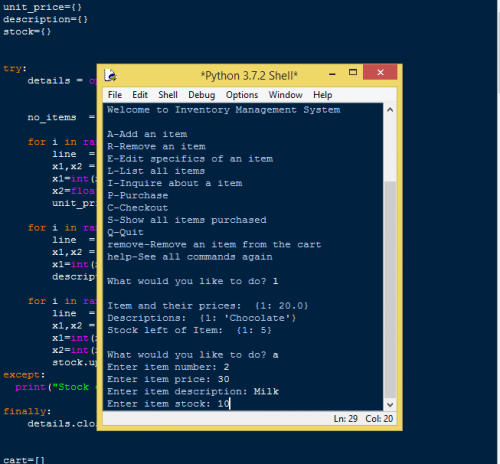

- PYTHON PDF CREATOR OPEN SOURCE HOW TO
- PYTHON PDF CREATOR OPEN SOURCE INSTALL
- PYTHON PDF CREATOR OPEN SOURCE FULL
Yes, in principle we could have just reconfigured PyPDF2 (or PyPDF3, for that matter) until it arrived where we want PyPDF4 to be. Short version: PyPDF4 is a clean break designed to do what PyPDF2 did, but on a more sustainable, business-worthy basis. The PDFMiner API appears to me a bit overly-complicated to use - see a good example here. ^- not sure to have understood exactly the difference between the two. PDFMiner.six: (last commit 3 days ago - seems to be the most actively maintained project) Notebooks can have associated files, which means they can read a PDF file and store results to the associated notebook’s files.I'm looking for well-maintained and well-documented powerful PDF parsing libraries for Python (mainly to extract and parse data from various types of PDFs with different/unpredictable structures, including with the help of reliable and powerful OCR).Ĭurrently I'm aware of the following main projects:
PYTHON PDF CREATOR OPEN SOURCE INSTALL
This can be done in a one-line code cell like so: !pip install pdfservices-sdkĪfter that, you can write your code as you would normally.

In order to use the Adobe PDF Services SDK in Google Colab, you have to install the SDK first. Everything is run in the cloud with no need for any local installations.Īfter opening up Google Colab, create a new Notebook.

This is a free, completely web-based way to use notebooks. Using Notebooks with PDF Extract - Google Colabįor the first example of using PDF Extract with Jupyter Notebooks, we’ll look at Google Colab.
PYTHON PDF CREATOR OPEN SOURCE FULL
This means you can skip rerunning it multiple times as you iterate over how you work with that data.Īs I said, I’m still fairly new to all of this and I’m sure I’m not adequately describing the full awesomeness of what can be done, but it’s already changing how I think about working with Python. Imagine now that the first cell was a somewhat slow operation. But - if you do the same operation on the code cell just displaying the data, it won’t change. You can go to the first code step and choose the “Execute cell and below” option which will show new ages for the cats. Here’s an example created in Visual Studio Code as a simple example: In fact, they don’t even need to be developers, as the notebook can walk you through the entire process. With a web-based interface, a person using the notebook need not worry about environments and dependencies. It will simply make use of the last result from the previous cell.

You can run the first cell, then the second, realize you messed up, and choose to rerun just the second cell. While you can run a notebook from start to finish, you can also run one cell at a time. In many cases, you can provide more rich output than usual with tables that are nicely rendered with sorting features or charts that make the results easier to read.Īnd here’s what really sold me on the idea. When a cell contains code and is run, its output will be printed directly beneath the cell. Text in a cell can be used to describe what’s going on, so in some ways it’s much like code comments, but with rich Markdown support, it becomes a bit easier to read as well as provide richer documentation. While we’re focusing here on Python, other languages like R and Haskell are supported as well. To be honest, I’m still fairly new to the concept and it was difficult for me to truly wrap my head around what they did, but now that I’ve spent a little bit of time with them, I’m kind of blown away.Īt the simplest level, a notebook consists of cells. Jupyter Notebooks comes from an open-source project designed to create a sort of interactive playground for working with code.
PYTHON PDF CREATOR OPEN SOURCE HOW TO
In this post, I’ll explain how to use the PDF Extract API and Python in this environment, covering both Google’s Colab platform and notebook support within Visual Studio Code. One of the things I’ve run across in my exploration of Python is the use of notebooks. This was particularly exciting to me as I’m new to Python and I’m really enjoying learning it. Recently we launched our first Python SDK specifically for support with the Adobe PDF Extract API.


 0 kommentar(er)
0 kommentar(er)
